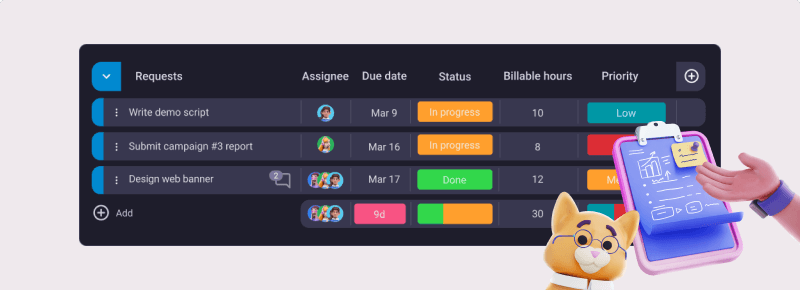The truth is — to make their projects run like clockwork, project managers and team leaders make detailed plans and employ various strategies.
But, as you’re probably well aware, projects don’t always go according to plan.
Every now and then, your best-laid project plans are swayed by situations that require immediate action. Such situations are known as ad hoc projects and ad hoc requests.
Since you usually have to tackle them in parallel with your main project(s), these tasks can seriously affect your team’s productivity and spoil your entire game plan.
Luckily, there are methods you can use to handle ad hoc assignments.
Read on to learn more about them and find tips and tools that can help you stay on track.

Table of Contents
What are ad hoc projects?
An ad hoc project is an unexpected and unique project that’s outside of your regular project plan and aimed at addressing a specific problem.
“Ad hoc” is Latin for “for this” or “for this situation”. It refers to a one-time activity that’s necessary for a particular purpose.
There are various reasons ad hoc projects and requests emerge, including:
- Poor communication,
- Poor planning,
- Specific client or upper management desires,
- Roadblocks identified during any of the project phases, and
- Personnel, schedule, or budget changes.
Given the element of surprise, projects and requests titled “ad hoc” are not scheduled in advance. Instead, they crop up, make a mess, and it is up to you to dampen down the fire.
Worse, they often vary in scope and size. Ad hoc projects can be small requests, such as writing a quick email, or bigger projects, such as company event organization.
Keep track of ad hoc projects in PlakyCharacteristics of ad hoc projects and requests
Since ad hoc projects and requests come out of the blue, they have certain characteristics that differ them from traditional projects:
- Focusing on a specific goal — unlike traditional projects, ad hoc projects have a central focus of interest and are usually smaller in scale.
- Requiring quick completion — ad hoc tasks are time-sensitive, and they usually disrupt your current work since you need to make quick arrangements.
- Going through fewer complexities — since they have shorter time spans, ad hoc projects go through less red tape.
- Using fewer resources — project managers try to localize ad hoc work and not disturb the whole team or hinder the project workflow.
- Being reactive — ad hoc projects or requests solve a certain problem or issue that has been identified and demands a prompt reaction.
All these characteristics make ad hoc tasks unique, and we’ll illustrate them with some examples later on. But, first, let’s see why you should track your ad hoc work.
Why is it important to track ad hoc projects and requests?
Ad hoc projects and requests often fly under the radar as they don’t fit into an existing project activity list.
Large projects are tracked and controlled from beginning to end, and you might think there shouldn’t be any fuss over some ad hoc task as long as the major project is on the right track.
However, if you have ever wondered why there were delays in the project delivery and why the project suffered extra costs — ad hoc projects could be the culprit.
To illustrate the importance of tracking ad hoc work, we’ll list a few benefits in support of keeping close tabs on such tasks.
You improve your progress tracking
Adding ad hoc assignments to the task list is time-consuming. But, if an ad hoc project and/or request is the reason you have to drop a primary task, you should definitely record it.
Tracking ad hoc tasks helps you get the whole picture by showing you how these tasks affect the project budget and schedule. You can clearly see how much time you spend on each task and monitor the project’s progress.
What’s more, tracking ad hoc tasks allows project managers to make informed decisions when they allocate tasks and determine deadlines.
You enhance your resource management
Every team leader and project manager must have a firm grasp of the current state of their project resources.
By tracking the time your team members spend working on ad hoc projects, you can:
- Manage your human resources better,
- Request team expansion, and
- Postpone some less important project tasks on your list.
Also, by tracking ad hoc work, you can identify if there are any extra costs and if there is a need for budget adjustments. Knowing the available budget and the amount of work left, you can then secure more money on time and/or prevent overspending.
Manage project resources in PlakyYou get a better insight into work patterns
Finally, by tracking ad hoc tasks, you can spot recurring ones.
For instance, if you notice that your team members have to deal with unnecessary administrative tasks every now and then, you can make changes in the work organization and reduce the amount of time they spend on such tasks.
When you determine the amount of time necessary to invest in ad hoc work, you’ll be able to plan more efficiently in the future and delegate other tasks accordingly. So, by tracking ad hoc tasks, you can avoid inefficient processes and improve productivity.
Ad hoc work examples
Ad hoc projects and requests are more or less present in every industry. They aren’t standard, and they’re definitely not part of your pre-planned project activities. Still, life happens, and these projects and requests are almost inevitable.
You may recognize yourself in some of the following examples, each focusing on one of the ad hoc characteristics listed above.
Example #1: Patching a security vulnerability
Let’s say that your company develops software for clients who want to improve their services and/or products. As a project manager in charge of one of the apps, you follow your carefully laid-out software development plan.
But, during the control phase, some of your co-workers inform you about a possible security breach on the account.
Since you naturally want to protect your company and your clients’ data, you gather a security team to patch a security vulnerability and move the data somewhere safe until they carry out the necessary system improvements.
In this example, the ad hoc request for a security team was to move the data — it’s a single goal to focus on. Without the fast formation of a team to fix the issue, valuable data would be jeopardized.
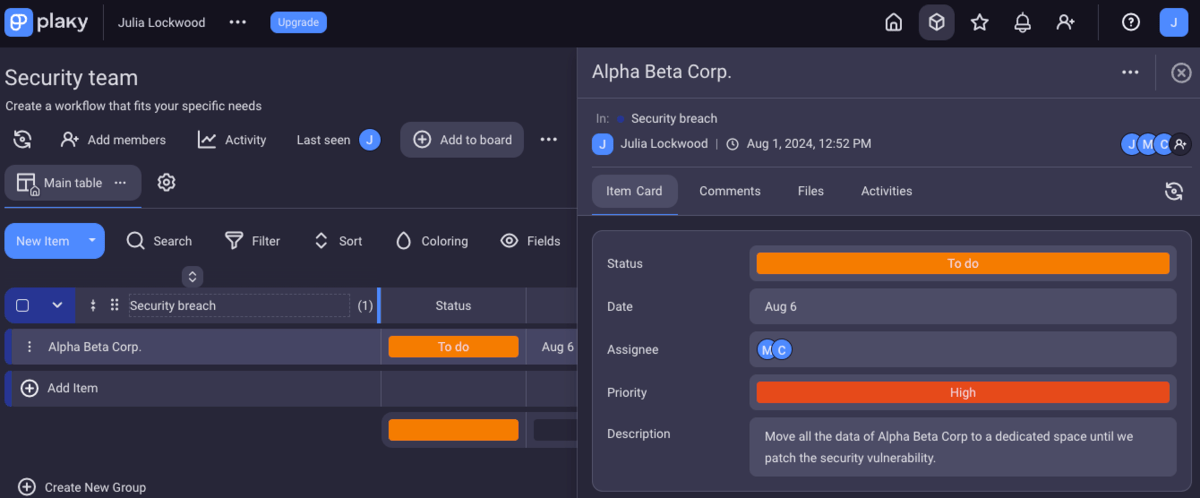
Example #2: Unexpected report for a client
Prime examples of ad hoc requests are unexpected and most urgent (read: do or die) reports for clients.
Imagine you are in the middle of your marketing campaign working on the design of a newsletter for potential clients. The client who pays for the campaign sends you an email asking for a report on the current state of the campaign. The subject of the email starts with the notorious “urgent” or “needed ASAP”.
Without even considering why they need the report at this very moment, you leave the work on the newsletter and start working on the ad hoc request because the client is important and you want to keep them.
So, you are going to put all your energy into the report to please the client since this request takes precedence.
Writing the report will take time, so documenting this additional work is crucial for the entire team working on the campaign. And since you need to pause your work on the newsletter, your team and manager have to be informed and adjust their tasks and time as well.
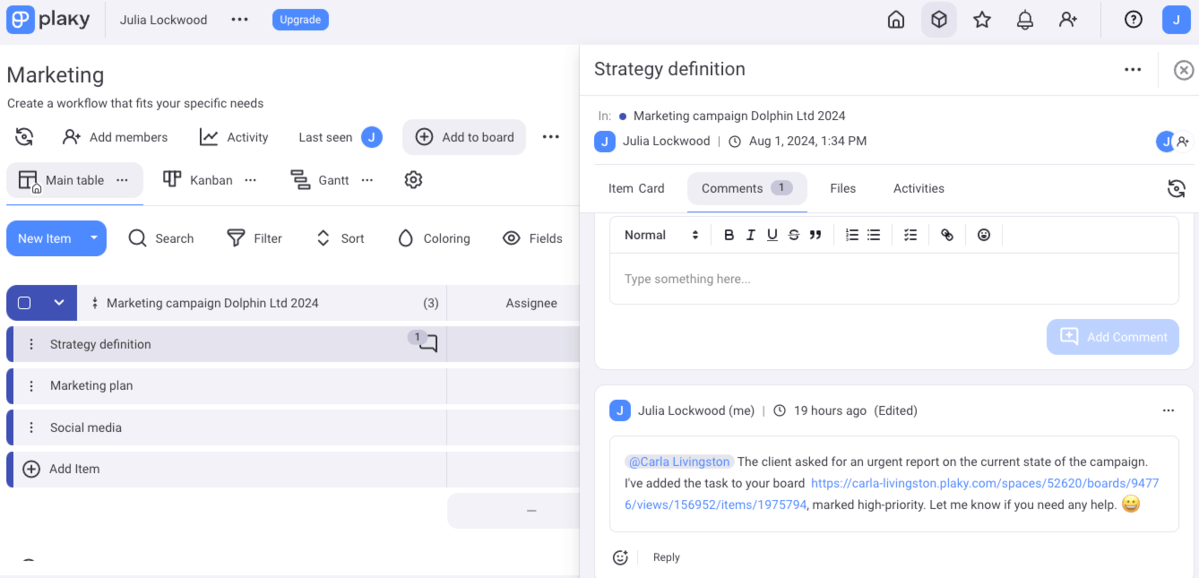
Example #3: Secure promotional items for donors at a fundraising event
Suppose your company gets the opportunity to organize a fundraising event. This is a large project that requires the formation of planning committees, finding donors, recruiting volunteers, and much more. You also need teams to deal with catering, decorations, entertainment, and marketing.
Now, picture this — you are assigned to manage the committee in charge of advertising and marketing. Your teams’ job is to promote the event by securing marketing materials and invitations.
Then, on the day of the event, one of your committee members realizes they haven’t secured promotional items for the donors.
Pressed on time, you, as the manager of the committee, need to decide how to solve the burning issue.
You already know it’s hardly possible to go through all the red tape and get approvals. So, to avoid hitting the panic button, you assign an ad hoc task to 1 or 2 team members who will check if there are any spare promotional items and, if not, will procure them, however they can, until the event starts.
In this case, tracking would help to avoid confusion and overlook such an important step.
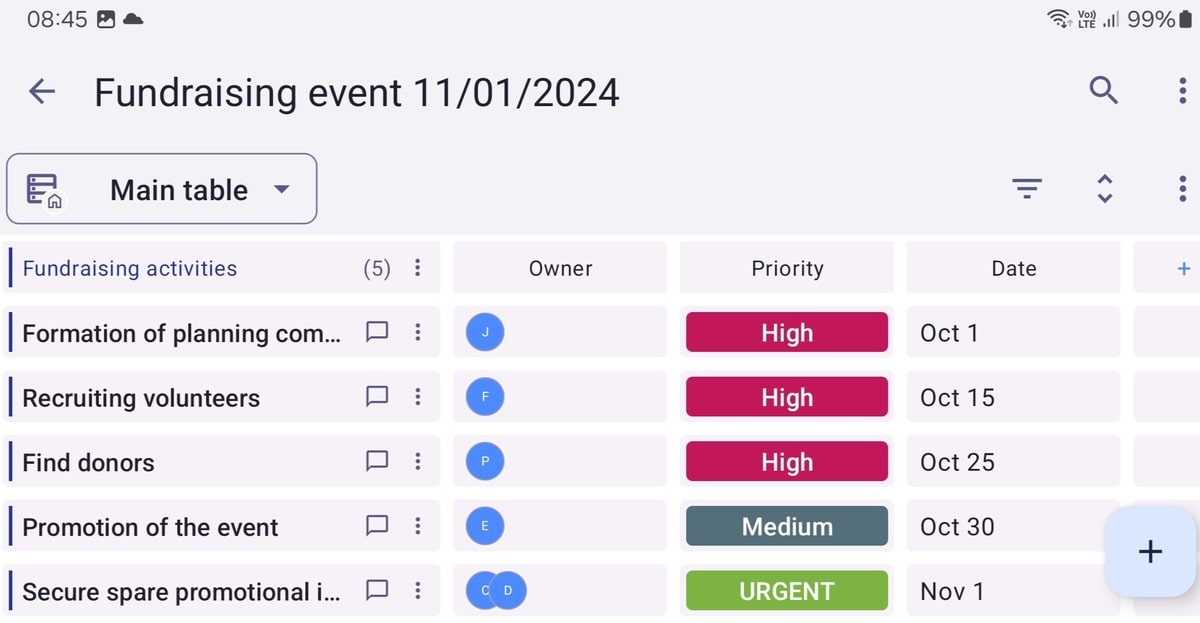
💡Plaky Pro Tip
Looking for a simple way to plan a non-profit event fast? Check out the following resources:
Example #4: Securing a missing permit for a renovation
A family has hired your construction company to renovate their home. The project manager needs to gather a team of architects, contractors, and construction workers to deal with the renovation.
The family wanted to repaint the house, repave the driveway, and install floor coverings. As the team started work, the family asked for the installation of an underground sprinkler system as well.
So, all of a sudden, the manager gets an ad hoc project to carry out. However, there is a catch — the installation requires a plumbing permit.
Because of this, the manager has to appoint a contractor to obtain the plumbing permit and change the renovation plan until the permit is obtained.
In this example, the manager knows who should get this ad hoc task, and the rest of the team is not disturbed by these new events.
What’s more, by documenting this new ad hoc task, the manager can make better decisions on the time needed to finish the project, reorganize workers, and make sure that the quality of the work is not compromised.
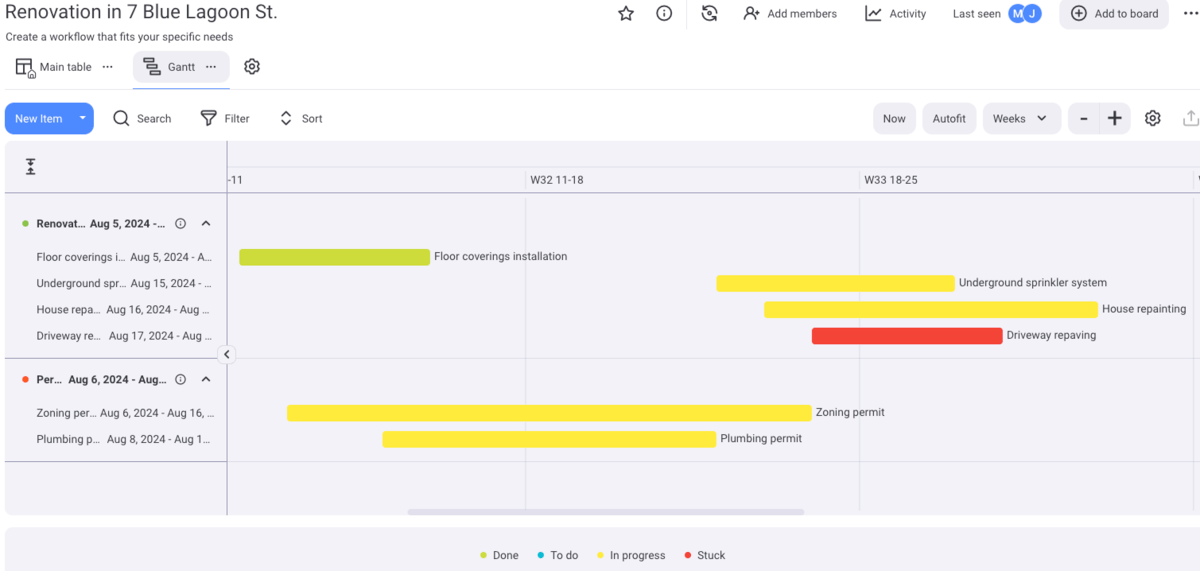
💡Plaky Pro Tip
The easiest way to organize and track your construction activities is to use reliable software. If you don’t want to miss a single detail of your construction project, check out this Plaky template that can help you keep your project on time and budget:
Example #5: A PR campaign as a response to a client’s tarnished reputation
Here’s an interesting scenario: you own and manage a website selling products online. However, when you least expected it, the website experienced a service outage due to high demand for products on sale.
Many customers failed to receive a purchase confirmation and therefore lost confidence in the website. Also, such failure must have caused public outrage, and, oh dear, imagine the amount of negative comments on the website’s social media platforms.
This is an emerging issue for you and a clear call to start an ad hoc project, i.e., gather a PR team to fix the situation as soon as possible and help you regain your lost reputation.
Urgent PR campaigns usually require the most experienced people in a team. By recording their ad hoc work, you can reorganize their tasks on regular projects and prevent your best people from experiencing burnout.

What’s the best way to track ad hoc projects and requests?
Requests for some ad hoc work mostly arrive via email, chat channels, sticky notes — or co-workers simply walking over to your desk unexpectedly.
Before you even decide what a new ad hoc project requires and how to handle it, it might be a good idea to bring such a request process into line.
Whether you decide to create a request form or a centralized request board within your chosen project management software, you’ll have a better understanding of what needs to be done, when, and why.
However, if you want to learn more about ad hoc project management, you should listen to professionals and adopt some of their wise tactics.
We reached out to Timea Gardinovački and Zoran Vizmeg — Project Managers at CAKE.com for Pumble and Clockify respectively — to offer first-hand tricks of the trade for smoothly dealing with ad hoc tasks.
Tip #1: Keep calm and evaluate the ad hoc project
What’s your reaction to ad hoc tasks? Do you get sweaty palms or even a headache while thinking about how to integrate a new task into the ongoing project plan?
Everything seems much more difficult when you can’t keep your head cool. Also, it’s easier to make mistakes when you need to act fast.
That’s why Timea highlights the importance of not panicking when you face an unexpected task:

“The first and most important thing is that when we get an ad hoc project, we keep calm and evaluate it. Even though the nature of ad hoc projects is that they need to be done fast (now, yesterday), we need to make sure that we fully understand them. As a Project Manager, I am responsible for my team’s workload and availability, so it is crucial that I understand what the scope of the ad hoc project is so I can rearrange the team’s current workload and assign the right people to it.”
Tip #2: Communicate the ad hoc project to your team
Whatever communication channels you use within your team, you are aware of the importance of getting timely information and feedback on a project. When your team knows what to do, and they are aware of potential problems, you can expect them to function, provide support, and reorganize in the best way possible.
Therefore, it is vital to keep your team updated on all the changes (good or bad) and stay candid. As long as everyone is on the same page, you can expect a positive result.
Timea is sure that open communication is the key to solving ad hoc tasks:

“This is not an easy task, as you need to juggle a lot of things. It is of great importance to communicate with the team about the ad hoc project and inform them that there will be some rearranging happening because of it. Of course, having a great and reliable team helps a lot, but we still need to make sure they are all clear on what is going on and what is expected.”
💡Plaky Pro Tip
If you want to learn more about the benefits of effective communication within your project team, check out this guide:
Tip #3: Create a small temporary team
If your team often faces ad hoc assignments, think about forming a dedicated team to tackle such tasks. Having a small team to deal with ad hoc work is actually a smart strategy because you could avoid workload confusion and disrupting the entire team.
This is exactly what Zoran recommends. His tip sheds some light on the way that the team behind Clockify stays ahead of unexpected issues:

“If ad hoc projects come pretty often — which is the case in our environment — it is necessary to create a solution for that. Recently, we have created a small temporary team that contains 8 developers and 2 project managers.
That team acts when an ad hoc task pops up. The team’s obligation is to find a quick technical solution for the requested task, allocate resources, and act immediately, and their first priority is to work on ad hoc projects.
If there are no ad hoc projects, the team’s obligation is to handle technical debt, which is a lower-priority task in this case.”
Tip #4: Celebrate the completion of an ad hoc project with your team
Isn’t it great to bring an ad hoc task to an end? You can sit back in your chair and finally change that status field from “In progress” to “Done”. You and your team did it, without causing imbalance in the ongoing project(s)!
After investing so much effort into finishing the ad hoc project, marking the completion of it may have a restorative effect on the team. This tip is an important step in Timea’s team management:

“Every ad hoc project brings a certain level of additional stress to the team, so in my opinion, it is crucial to give credit to the people working on it, show your appreciation and, of course, be there for your team, even if it is just for a ‘venting session‘.”
Need help with your ad hoc projects? Try Plaky
Since ad hoc projects are always unexpected and need to be dealt with quickly, you need flexible task management software that’s able to adapt to constant changes.
That’s exactly where Plaky comes in.
Thanks to Plaky’s highly customizable interface, you can create a dedicated board for your ad hoc projects and easily add an item for each ad hoc task.
To make sure you avoid disaster, be as detailed as possible and include the following information in the item card:
- Task description,
- The assignee(s),
- The resources that should be used,
- The person the assignees report to, and
- Due date.
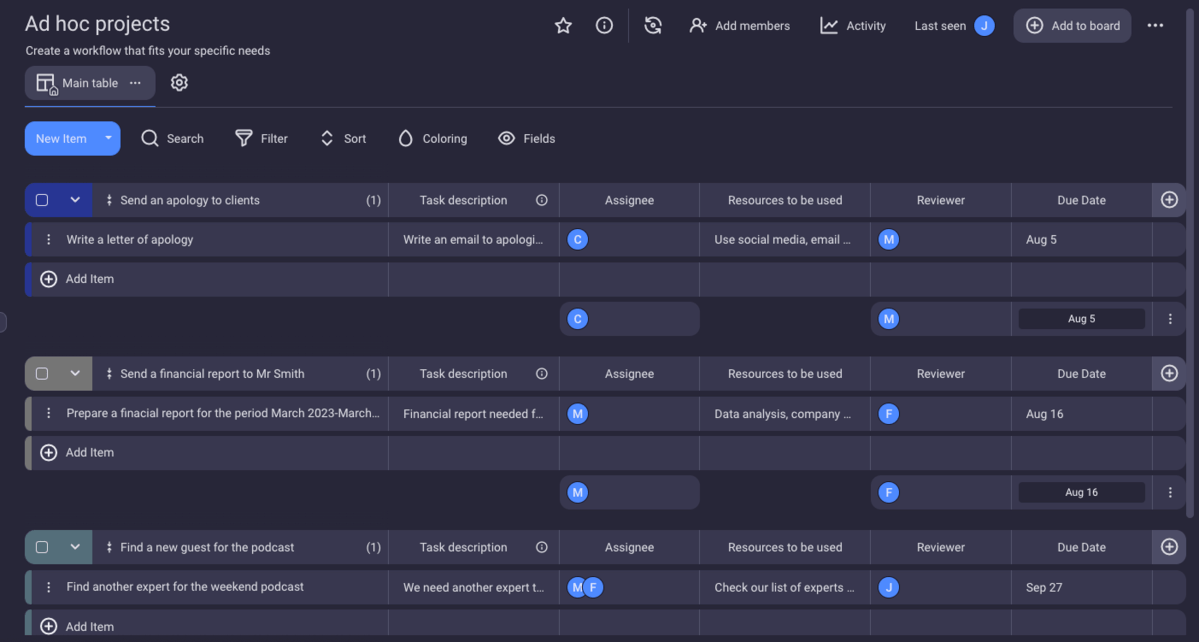
Once it’s all set up, you can:
- Use the sort and filter options to prioritize your ad hoc tasks,
- Track task progress in 3 different views (Table, Kanban, and Gantt view),
- Keep an eye on board changes in the activity log,
- Directly communicate with everyone involved in real time using comments and reactions, and
- Effortlessly share updates and files.
And since ad hoc projects are usually time-sensitive, you can also track the time it takes to complete them. With a few clicks, you can easily integrate Plaky with Clockify, a world-renowned time tracking tool, and be sure your planning will be more accurate.
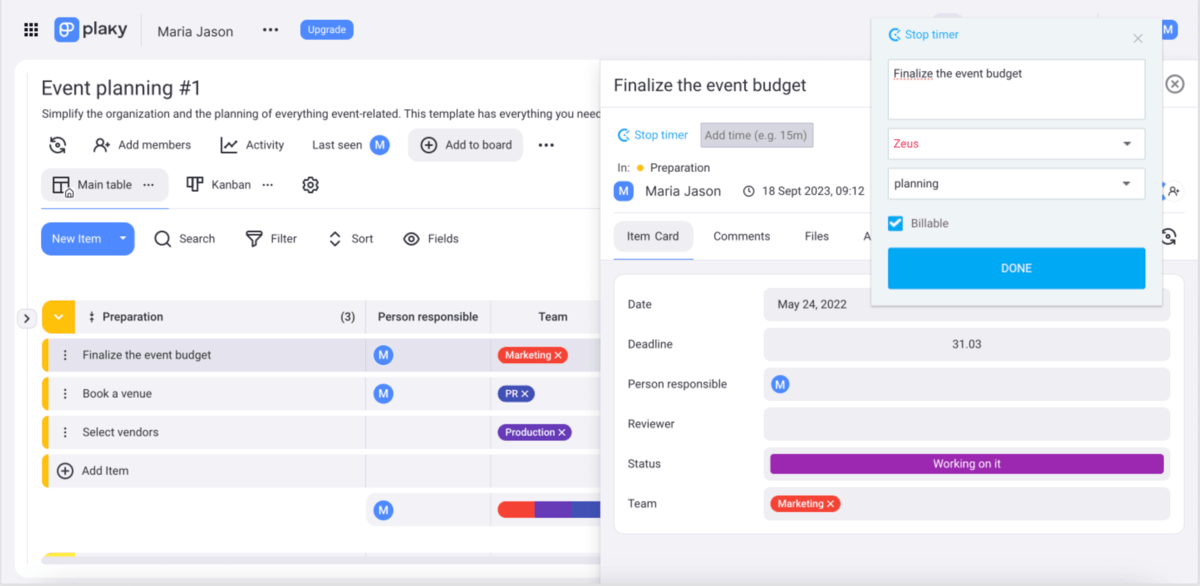
But wait — Plaky isn’t just an awesome option for ad hoc project management.
Using a project management tool such as Plaky can help you stay on top of all your short and long-term projects. Plus, Plaky is cloud-based, so you can have full control over your projects, teams, and tasks anytime and anywhere.
Don’t let ad hoc projects stress you out. Stay flexible and always ready for action with Plaky.




